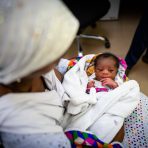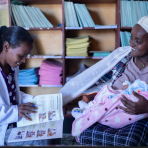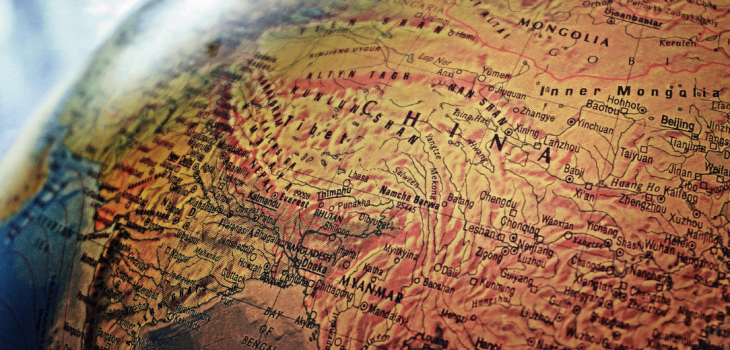By David Bishai[1] and Austin Strange[2]
[1] The University of Hong Kong School of Public Health
[2] The University of Hong Kong Faculty of Social Sciences Department of Politics and Public Administration
Background
The halt of the United States Agency for International Development (USAID) as a major source of health assistance ($16 billion annually) will trigger re-examination of balance and scope in foreign assistance around the world. For the remaining roughly 100 donor countries, urgent questions remain about how these governments will seek balance between aid’s developmental and strategic functions, and whether and who will step up to fill an imminent void, particularly in global public health.
Eyes are now on China amidst USAID’s funding uncertainties. Will China’s government alter the nature and scope of its bilateral health assistance, long an important pillar of its international development cooperation? Will its engagement in and contributions to multilateral assistance be accompanied by shifts in its global health strategy? Reviewing recent goals and trends in China’s foreign health assistance can inform answers.
China and International Development
Throughout the post-World War II international development regime, donors and lenders have viewed aid–including that aimed at public health and other highly visible issue areas–as an important tool for health equity as well as building goodwill among foreign elite and public audiences. There is abundant scholarly evidence that aid is effective at doing this. China’s government has maintained a foreign aid program since shortly after its founding. Over the past seven decades it has invested in a diverse set of highly visible overseas development activities, from sponsoring thousands of physical and now digital infrastructure projects, to dispatching over 30,000 medical professionals across the Global South and providing vaccines and medications. These “hard” and “soft” initiatives have important socioeconomic objectives, but they are also valuable for China’s international image and relationship-building at local and national levels.
By pausing most of USAID’s funding and operations, Donald Trump and Elon Musk sent a loud signal about America’s lack of consistent commitment to supporting development around the world. The Department of Government Efficiency (DOGE)’s impact on USAID is particularly jarring because the Agency has been a world leader in demonstrating how to support global public health while simultaneously building goodwill. US annual aid was only about 1% of the federal budget in recent years, even after significant increases to war-stricken partners such as Ukraine, but accounted for a large share of global humanitarian aid, making it a rather unique resource in America’s foreign policy toolkit. Over 20% of USAID funding was devoted to health activities and has supported some of America’s most successful–from both a public health and public relations viewpoint–initiatives, such as PEPFAR.
Chinese development finance includes both hardware investments like cellphone towers, roads, and hospitals and software investments like training and policy advice, but is known for placing a greater emphasis on the former. Yet while debt-financed infrastructure now represents the bulk of Chinese development cooperation, China’s international development cooperation features a diverse mix of concessional aid and commercially-oriented financing that supports an extremely wide span of projects across transportation, energy, industry, agriculture, education, health, and other sectors.
China’s growing investments in health aid offer an important example of how China’s diverse overseas development activities serve both developmental and relational goals. Between 2000 and 2017 China’s government committed over 1,300 health projects worldwide, roughly 13% of its total aid portfolio, and these projects were spread across services such as specialty equipment and tertiary services (37%), basic medical services and drugs (19%), and basic health infrastructure (13%). A more recent study estimates Chinese global health and population aid totalled nearly US$30 billion over the same period. China has prioritized health aid across Asia and Africa, and has invested heavily in sectors not already well-covered by Organization for Economic Cooperation and Development Assistance Committee donors including medical services and basic health infrastructure. During the COVID-19 pandemic, the Chinese government provided over US$4.6 billion in pandemic aid, the most of any donor. In short, China’s global health assistance is large, growing, and multidimensional, and delivers hundreds of visible interventions in the form of services, products, and infrastructure at both local and national levels in Global South countries. China also contributes to various multilateral organizations that provide development assistance and have long relied on USAID support, such as the World Food Programme of the United Nations.
The spillovers from USAID’s woes may produce unforgettable lessons for China as it thinks about the priorities of aid partners. For aid recipients, the long term dependability of bilateral assistance from any single donor will be questioned. Aid packages will be scrutinized for the potential mayhem they could cause if funding suddenly stopped. China will find a warmer welcome for co-designing health assistance—both software and hardware—that accelerate a receiving partner’s capacity to meet their own needs by building local institutions. A donor like China will need to bring even more field knowledge of the science of socioeconomic development and public health into crafting investments. This shift will trigger China’s higher education institutions to do more training of a workforce ready for careers in development policy and the systems science of global public health. We predict a mirror image of what is happening in US right now where careers are ending and student interest in these fields is fading rapidly. For example, the applications from mainland China for the University of Hong Kong’s Masters in Public Health and Bachelors in Global Health and Development have increased by 26% and 80% respectively compared to 2024.
Conclusion
Whether Chinese health aid will shift further into software investments like those historically developed by USAID depends on Beijing, which already has a longstanding approach to global public health in place. We believe that recipient countries will want to have more assurance than ever that their partnership with a donor will not backfire. They will need more participation in seeing how each investment serves their development and is shielded from vagaries of a donor’s internal politics. We predict that China and other Asian and “emerging” donors will be called upon to fill global coverage gaps, both bilaterally and multilaterally, amidst major changes in the international politics of development. The composition of Chinese health assistance should not be expected to resemble nor replicate what was lost with the drawdown of USAID funding.











